My MAX44251 dual op-amp has a very small unwanted 131KHz periodic artifact at the output, seemingly regardless of how it's configured.
My assumption was EMI, but I can't see this 131KHz signal on any other part of the circuit. I've also tested this in multiple buildings, with multiple probes, with all other electronics turned off, and surrounded by foil shielding.
What should I try to remove it? I would like to at least achieve a voltage follower with noise under 1mV.
The chip was originally used in a more complex circuit when I first noticed the problem. BUT, to isolate this issue I made a whole new test PCB with fresh components. I left extra pads to reconfigure the chip in different ways while testing.
Right now it is configured very simply:
simulate this circuit – Schematic created using CircuitLab
The bypass caps are on the bottom ground plane layer. Vias are hand soldered.
I have observed the effect through both the Agilent 10X passive probe (It's hard to see), and through a probe like the following, with which I can zoom all the way to 2mv/div. Originally, it was observed because the output is fed to a comparator, and the comparator output indicated the input signal amplitude was > the desired 2mV.
The waveform is periodic but kind of strange. Here's a few pics from different angles:
200 ns Stopped
50 ns Free Running
20 ns Free running
10 ns Stopped
